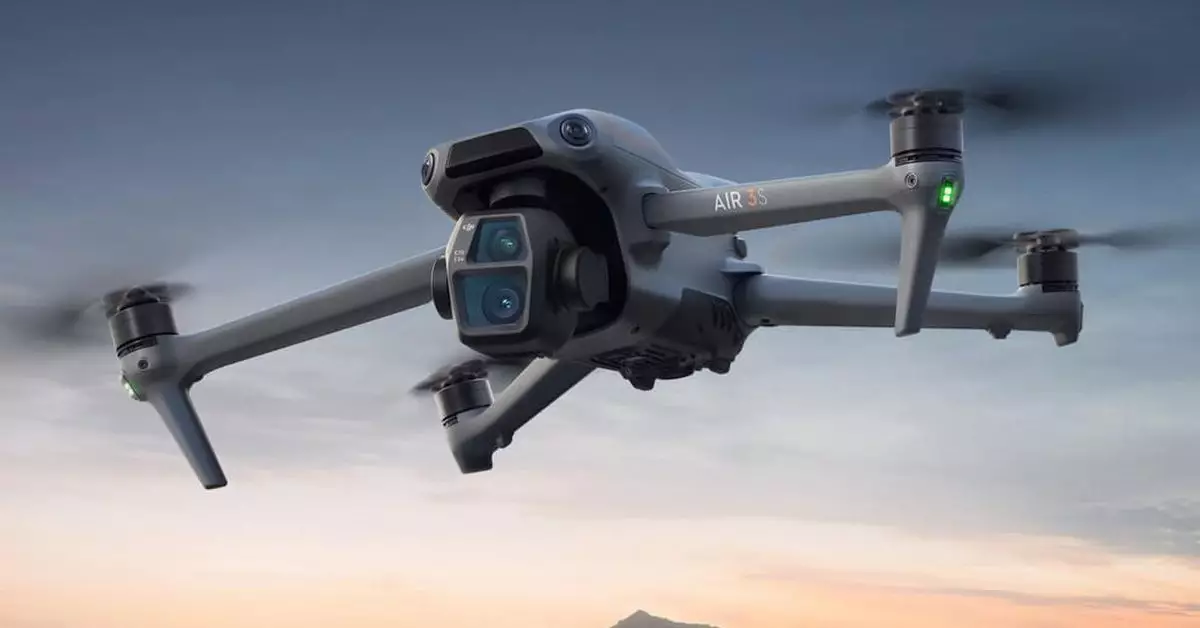The drone industry has seen remarkable growth and evolution over the past decade, bringing advanced aerial technology into the hands of both consumers and professionals. However, recent developments concerning DJI, one of the leading drone manufacturers worldwide, have thrown a spotlight on the sometimes fraught intersection of technology, international relations, and domestic policy. Current import restrictions imposed on DJI’s drones, particularly the newly unveiled Air 3S, highlight a complex narrative involving government initiatives, economic interests, and human rights concerns.
DJI has found itself at the center of a significant import issue in the United States, with its flagship model, the Air 3S, unable to reach retail distribution as a result of governmental constraints. This predicament arises not from a sudden ban on the company’s products but from a broader investigation by the Department of Homeland Security (DHS). The primary focus of these investigations seems to stem from heightened scrutiny surrounding products produced in China, particularly with respect to legislation such as the Uyghur Forced Labor Prevention Act (UFLPA).
The UFLPA is designed to address human rights abuses related to forced labor in the Xinjiang region of China, where allegations of systemic oppression against the Uyghur population have drawn international concern. This has resulted in intensified scrutiny of any goods imported from that region, and as DJI has articulated, it finds itself embroiled in an unwarranted misunderstanding about its production practices. They assert that none of their manufacturing occurs in Xinjiang, and all operations are based in Shenzhen or Malaysia.
The implications of this current legislative climate extend beyond just market access for DJI drones. The company claims that although the customs-related issues have predominantly affected its enterprise and agricultural drones, the ramifications have now also hindered the availability of the Air 3S for American consumers. DJI released communication to its distributors indicating their compliance with U.S. laws and international standards, hoping to alleviate concerns raised by the UFLPA.
DJI is currently not on the UFLPA Entity List, but its earlier designation on the Department of Commerce’s Entity List raises questions about the longevity and stability of its operations within the U.S. market. This classification, which alleged surveillance technology supply to the Chinese government, has established a precedent for future barriers, potentially jeopardizing years of market investment by the company in the United States.
At present, the political landscape adds another layer of complexity to DJI’s problems. The U.S. House of Representatives has previously passed legislative measures aimed at banning DJI importation, but for any such ban to be effective, it would also need to pass the Senate. In a noteworthy twist, Senate discussions have seen this proposed ban stripped from earlier drafts of essential defense-related legislation, indicating a potential shift in the political winds. However, amendments can still be proposed, meaning the conversation surrounding DJI’s market presence continues to be fluid.
DJI’s efforts to engage with U.S. Customs and Border Protection to rectify these issues illustrate the company’s desire to maintain its foothold in the lucrative and competitive American market. In the past, federal restrictions have mostly impacted DJI’s business dealings with governmental entities rather than individual consumers and retail sales. This nuance in approach suggests a desire to balance national security concerns with consumer access in a diverse marketplace.
As the intricacies of politics and technology unfold, the drone market’s future remains uncertain. If DJI cannot resolve its customs issues efficiently, it risks losing not only a significant portion of its market share but also diminished confidence from consumers who may turn to rival brands amidst uncertainty. Meanwhile, the technological innovations that consumers anticipate in products like the Air 3S might either be stifled or delayed, inhibiting further advancements in the field.
DJI’s current challenges shed light on broader themes of geopolitics and consumer rights intertwined with technological progress. As companies navigate such tumultuous waters, the need for clear communication and compliance with international standards becomes increasingly essential for their survival and growth in a competitive global market. The resolution of these issues could serve as a precedent impacting not just DJI, but the broader landscape of tech companies facing scrutiny in an increasingly polarized world.

